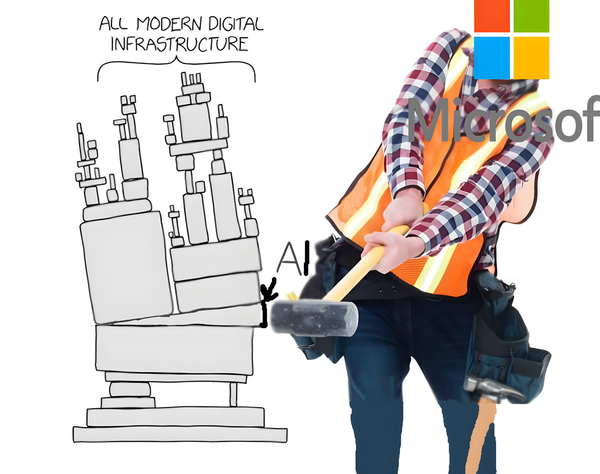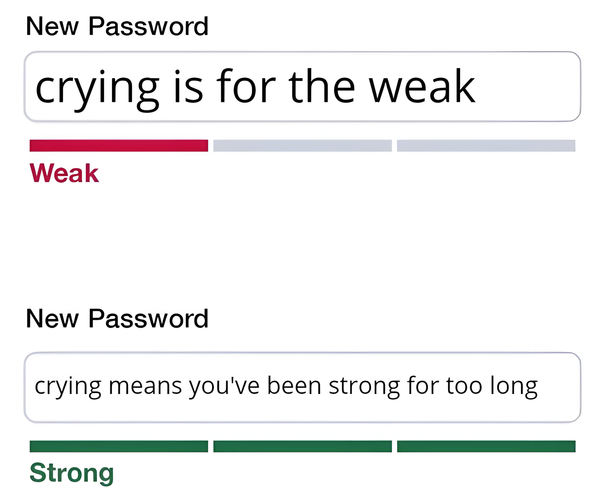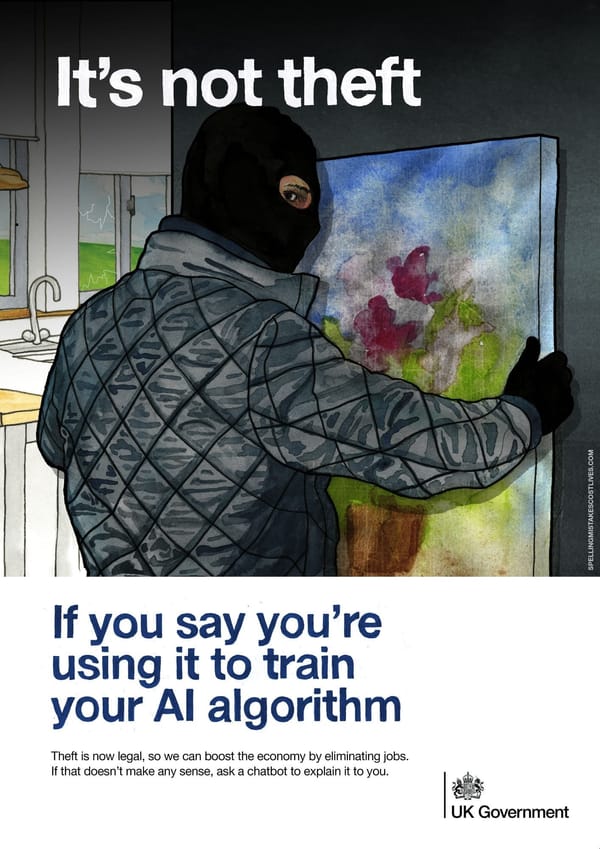The Managers' Guide #123
Unlock key lessons in leadership, strategy, and team management. Learn how to avoid common pitfalls, simplify complexity, and build stronger, more effective work relationships.

ME: [extremely burnt out] I need to take the day off to relax.
ALSO ME: I wonder if there is a way that I could relax that would be more productive.
Chris Hallbeck
Dumb Leadership Mistakes I’ve Made
- 🧠 Don’t dismiss your intuition — Intuition isn’t just emotion; it’s your brain rapidly processing millions of data points from past experiences. The author’s mistake was ignoring it because it wasn’t “logical”. The solution is to “show your work” by identifying what observations feed your gut feeling and defining how you’ll know if you’re right.
- 🎭 Avoid “data-driven theater” — Many leaders claim to be data-driven when, in reality, they aren't. The author argues it's better to be honest that you're making decisions based on vision or mission. The real mistake isn’t lacking data; it’s believing you’re data-driven when you're not, as this prevents you from actually building that capability.
- 💡 Make others smart, don't just try to be smart — Relying on your own expertise to gain trust can lead you to solve problems for your team instead of empowering them. A leader's true job is to make others more capable and to explain complex topics simply, not to impress people with jargon.
- 🏃 Use experts to save time — While a “figure-it-out-able” mindset is valuable, brute-forcing every problem wastes precious time. The author learned that hiring freelance experts for specific challenges is a cost-effective way to get answers quickly and avoid reinventing the wheel.
- 📈 You’re a business leader, not just an engineering leader — A critical mindset shift for technical leaders is to think beyond their department. Decisions must be evaluated for their impact on the entire product and business, not just on engineering.
Is this strategy any good?
- 📐 A good strategy has three core parts — The article emphasizes Richard Rumelt’s framework. A solid strategy must contain a clear Diagnosis (what’s the real problem?), a Guiding Policy (the overall approach to solve it), and a set of Coherent Actions (specific, concrete steps to execute the policy).
- ⚖️ Strategy is defined by its tradeoffs — A plan that doesn’t explicitly state what you are choosing not to do is a wish list, not a strategy. A strong strategy forces difficult choices and clarifies where resources will and will not be spent.
- 🤔 It must explain the “why” — A good strategy document is a compelling argument. It should articulate why this specific approach was chosen over other viable alternatives. If it doesn’t acknowledge other paths, it’s a sign of shallow thinking.
- 📈 Success must be clearly measured — The strategy should define what winning looks like with specific metrics. These metrics must directly connect to the initial diagnosis and show whether the coherent actions are successfully implementing the guiding policy.
What “managing up“ really means: A Practical Guide to Working with Your Manager
- 🤝 You are a partner, not a passenger — The article reframes “managing up” as a professional responsibility. It’s your job to proactively help your manager help you by providing clear updates, bringing solutions instead of just problems, and being explicit about what you need from them — a decision, feedback, or a roadblock removed.
- 🧠 Understand your manager’s world — To work effectively with your manager, you need to understand their context. What are their goals and pressures? What does their boss expect from them? How do they prefer to communicate? Aligning your work with their priorities makes both of you more successful.
- 🛡️ Trust is built on reliability and support — The foundation of a good relationship is trust. This means consistently doing what you say you’ll do, being honest about your progress, and having your manager’s back. The rule is to disagree in private but support them and the team’s decisions in public.
- 🎯 Don’t make them guess — A manager’s time and attention are limited. The guide stresses the importance of being direct. Instead of just stating a problem, come with a proposed solution. When you ask for help, be specific about what kind of help you need. This makes it easy for them to support you effectively.
Do the simplest thing that could possibly work
- ⚔️ A weapon against complexity — The question “What's the simplest thing that could possibly work?” isn’t about being lazy; it’s a powerful tool to cut through over-engineering and premature optimization. It forces a team to stop planning for every hypothetical future and focus on solving the immediate problem.
- 🎯 It forces deep understanding — You can't identify the simplest solution without first deeply understanding the problem you're trying to solve. The question pushes teams to strip away assumptions and “what ifs” to focus on the absolute core requirement, forcing a clear definition of what “working” actually means.
- 🚀 It delivers value and learning faster — By implementing the simplest solution first, teams can deliver value to users almost immediately. This creates a fast feedback loop, allowing you to learn what’s truly needed next instead of wasting months building a complex system based on assumptions.
- 🤔 A mindset shift from “future-proof” to “now-proof” — The approach directly challenges the common engineering impulse to build a perfect, scalable, “future-proof” system from the start. Instead, it prioritizes solving today's problem effectively, with the understanding that you can and will evolve the solution as new, concrete needs arise.
How to run large meetings
- 📚 Prepare first, apply together — The core idea of the Thayer Method, developed at West Point, is to flip the traditional meeting or classroom. Participants are responsible for learning the material beforehand through pre-reading, so session time can be used for application and problem-solving.
- 💬 Synchronous time is for interaction, not information transfer — A key principle is that expensive time spent together should be used for active work — like debating ideas, asking questions, and solving problems — not for passively listening to someone present information that could have been a document.
- 칠 Make work and thinking visible — A classic tactic of the method is sending students to the blackboard to solve problems. In a business context, this translates to making work-in-progress visible so the team can collectively spot issues, clarify misunderstandings, and learn from each other’s approaches.
- 🙋 It shifts responsibility to the individual — The method makes each participant accountable for their own initial learning. This frees up the leader or instructor to act as a “guide on the side” rather than a “sage on the stage,” focusing their energy on the most difficult parts of the problem.
That’s all for this week’s edition
I hope you liked it, and you’ve learned something — if you did, don’t forget to give a thumbs-up, add your thoughts as comments, and share this issue with your friends and network.
See you all next week 👋
Oh, and if someone forwarded this email to you, sign up if you found it useful 👇



